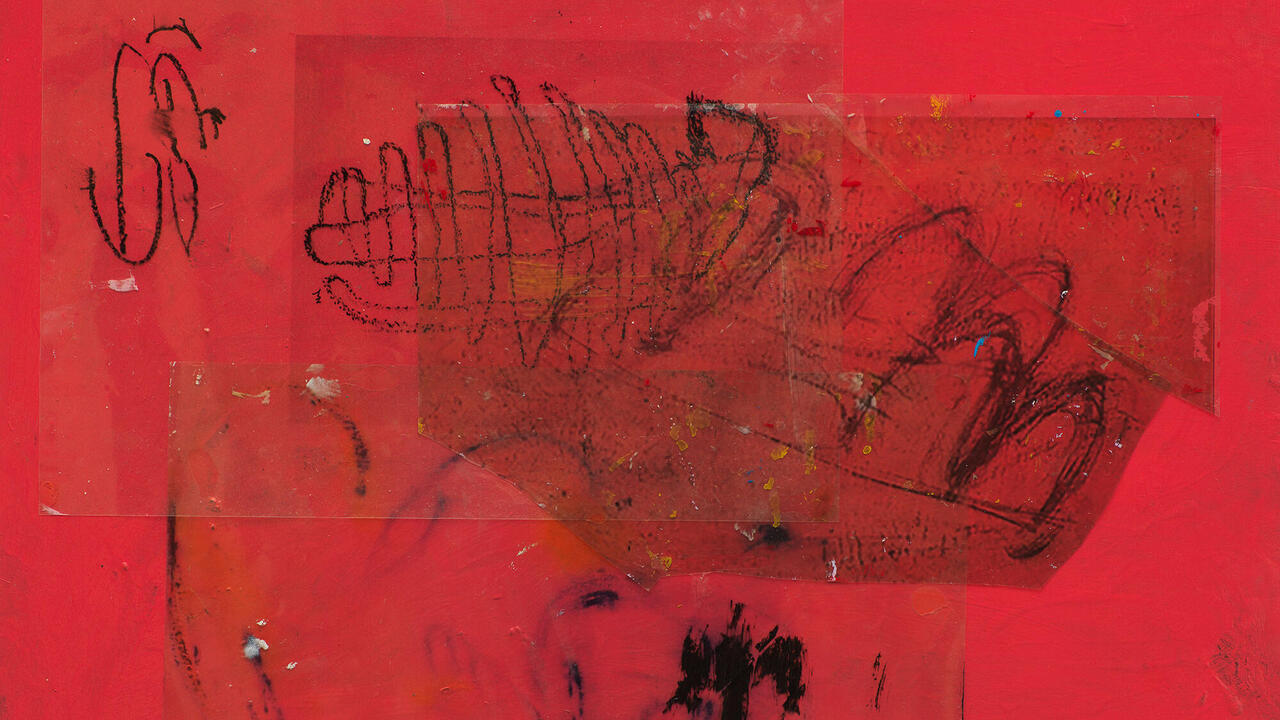Trisha Baga
Société Berlin, Germany
Société Berlin, Germany

Most of us have come to expect some variety of slick spectacle upon receiving a pair of 3D glasses. But in Trisha Baga’s first solo exhibition at Société, the technology is mobilized towards different ends – colliding with trash, craft, and the slower pace of conceptual performance.
Baga’s 3D video installations of various sizes fill all four rooms of the gallery. Most of the videos are projected onto minimally-painted and collaged Styrofoam boards leaning against walls and surrounded by objects that would usually be discarded or disguised: projectors, DVD players and speakers lie strewn across the floor, their cables left visible and winding. An array of pizza boxes, cigarette packs, beer bottles, and crumpled aluminium scraps have been left discarded around the gallery from the installation process. As in prior exhibitions, Baga purposefully obstructs parts of each projection with these seemingly scattered objects, which then become actors in the work, adding surfaces for projection while casting static shadows upon the movement of the video. Coupled with the mediation of 3D glasses, this physical layering lends her compositions a pleasurable reference to the experience of watching videos on one’s desktop with several tabs open.
Notions of waste, productivity and ecological disaster play out in Baga’s films themselves. In An Inconvenient Trash (all works 2013) she appropriates clips from the beginning of the well-known documentary An Inconvenient Truth (2006) – former US Vice President Al Gore’s attempt to disseminate the perils of global warming – and alters them, often undoing the original synched sound and animating the screen with Microsoft Paint-like computer graphics. Unlike in most of her other works, we don’t see Baga’s hands, head, or body in the video. Instead, most of the animation appears to be made with screen capture which the artist performs through digital gestures like pointing and drawing with a mouse. Baga’s additions both play with and pollute the original film – the documentary becomes just another digital artifact, the ironic result of Gore’s environmentalism filtered through the context of gallery-based garbage.
In Parrotfish the artist enacts the grand gesture of spray-painting a map of the US over a large mound of melting snow in a backyard rubbish dump. Her legs wrapped in bin bags and slowed by the snow and the litter, Baga’s movements are awkward but deliberate. She often points to a section of snow, as if we the viewers might recognize a particular state, but it is rarely possible due to the camera’s angle. Just before the loop resets, Cher’s 1989 hit If I Could Turn Back Time comes on, and the camera zooms in sentimentally on the shadow of the artist’s hand waving over spray-painted black arrows – probably stand-ins for some great American mountainscape. This slow, hilariously futile, ironically patriotic land art piece is preserved in a video that is too long for most viewers to watch in its entirety: the opposite of a Hollywood IMAX.
In the less epic The Bather, bits of tissue paper drift down onto the surface of bath water. A motif throughout several of the projections, the colourful pieces fall randomly, like in Jean (Hans) Arp’s Untitled (Collage with Squares Arranged according to the Laws of Chance) (1916–7), but here we see Baga’s process – a kind of craft performance through play – rather than the finished Arp piece. The colours slowly bleed out of the tissue paper: a red piece streams like a jellyfish, a pink one twirls mirroring a swatch of pale pink paint on the Styrofoam below. The artist’s finger comes into the frame and pokes the water, sending ripples around the bath. I think about the first time I saw an IMAX film, and grabbed at the projection as sharks zoomed towards me. But here the technology synthesizes everything into a flat, nearly continuous, photo-realistic surface and Baga’s technique cleverly mocks itself: I don’t need to poke the video, but must remove the glasses to see the Styrofoam.
















